SEO Basics: Beginner's Guide to SEO Success
Search Engine Optimization (SEO) helps people find your website on search engines like Google. It’s about making your site easy to understand for both search engines and visitors.
Learning SEO might seem complicated at first, but it’s not as hard as it looks. By following simple practices, you can improve your site’s visibility and attract more traffic.
This guide will give you everything you need to start your SEO journey. Whether you're new to websites or just want to know the basics, this is a great place to begin.
SEO is a key part of growing your online presence, and anyone can learn it with a little effort.
Understanding the Basics of SEO
1. Keywords and Their Importance
Keywords are the foundation of SEO. These are the search terms your customers type into Google to find businesses like yours. For example, a bakery might target keywords like "best cupcakes in [city]" or "gluten-free desserts near me."
To succeed, you need to identify and use the right keywords throughout your website's content, meta descriptions, and headings. Free tools like Google Keyword Planner, AnswerThePublic, or Ubersuggest can help discover high-potential keywords for your industry.
2. On-Page and Off-Page SEO
- On-Page SEO refers to optimizing elements on your website such as headings, keywords, image descriptions, and meta tags. For example, ensure every blog post is well-structured, uses proper headers (e.g., H1, H2, H3), and includes keywords naturally.
- Off-Page SEO focuses on building credibility through backlinks—links to your site from other trusted websites. Think of it as word-of-mouth on the internet. To improve off-page SEO, collaborate with local influencers or get listed on reputable directories in your niche.
3. The Role of User Experience (UX)
SEO isn’t just about keywords; Google also prioritizes websites that offer a seamless user experience. This means having intuitive navigation, fast-loading pages, and mobile-friendly designs.
Google’s algorithm rewards websites that keep users happy and engaged. Not sure where to start? Ask yourself, “Would I stay on my website if I were a customer?”
Setting Up Your SEO Strategy
1. Identifying Your Target Audience
Understanding your audience’s habits, preferences, and pain points is crucial. Are they tech-savvy young professionals or families looking for trusted local services? Use tools like Google Analytics to gather insights into who your site visitors are and tailor content to match their needs.
2. Conducting Keyword Research
Once you identify your audience, conduct keyword research to uncover what they search for. For example, people searching for "affordable plumbing in Chicago" are likely ready to hire someone soon. Focus on high-intent keywords relevant to your services.
3. Creating Quality Content
Content is king when it comes to SEO. Whether it’s blog posts, FAQs, or product descriptions, your content should educate, entertain, or solve your customers’ problems. Quality content ranks higher in search results, builds trust, and keeps users engaged.
Pro tip: Don’t neglect local SEO. Incorporate location-specific keywords like "best coffee shop in Austin" to attract nearby customers.
Implementing Technical SEO
1. Site Structure and Navigation
Your website should have a clear structure so that both visitors and search engine crawlers can find information easily. Use categories, subcategories, and simple menus to organize content in a logical way.
2. Mobile Optimization
Google ranks mobile-friendly sites higher. With over 58% of internet traffic coming from mobile devices, a responsive design that adapts seamlessly across screens is non-negotiable.
3. Page Speed and User Experience
Did you know that 53% of users leave a site that takes more than 3 seconds to load? Use tools like Google PageSpeed Insights to test your site’s speed, and fix any issues slowing it down (e.g., compressing images, reducing redirects).
Measuring SEO Success
1. Tracking and Analyzing Data
Measure your progress using SEO tools like Google Analytics and Google Search Console. Track metrics such as organic traffic, bounce rates, and keyword rankings to gauge what’s working—and what’s not.
2. Adjusting Your Strategy
SEO isn’t static; it requires constant adjustments. If a keyword isn’t delivering the desired traffic, experiment with alternatives. Similarly, refresh existing content to keep it relevant or add new blog posts targeting untapped opportunities.
Common SEO Mistakes to Avoid
1. Keyword Stuffing
Don’t overuse keywords to the point where your text sounds robotic. Instead, focus on writing naturally while weaving keywords seamlessly into your content.
2. Ignoring Mobile Users
Without a mobile-friendly website, you risk losing more than half of your potential audience. Prioritize responsive design from the get-go.
3. Not Focusing on Quality Content
Thin, low-value content won’t cut it. Your blog posts, videos, and product descriptions must provide real value or risk being ignored by both users and search engines.
Plan for Long-Term SEO Success
SEO isn’t a one-time effort. It requires consistent updates, monitoring, and adaptation as trends evolve. By keeping up with algorithm changes, learning from analytics, and staying committed to providing value to your audience, your small business can achieve long-term growth online.
Staying Updated on SEO Trends
Google changes its search algorithms regularly, and staying on top of these updates is essential. Subscribe to resources like the Moz blog and Search Engine Journal for continuous learning.
Need Professional Help?
If SEO still feels daunting, our experts at The Ricard Consulting Group are here to help. From keyword research to technical SEO, we’ll work with you to create a strategy tailored to your business.









